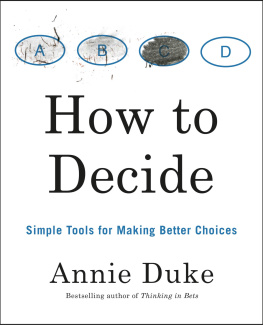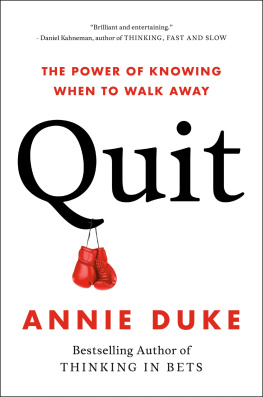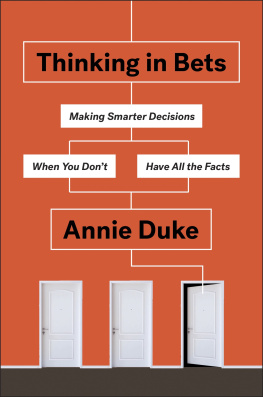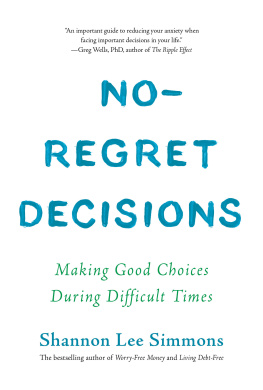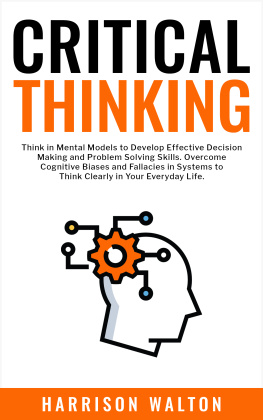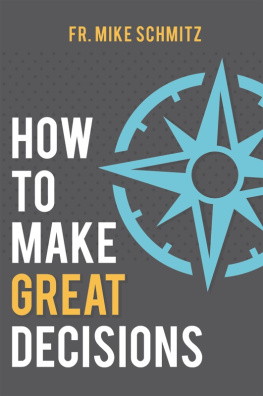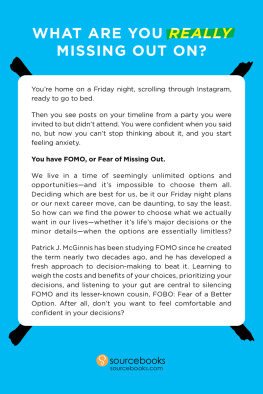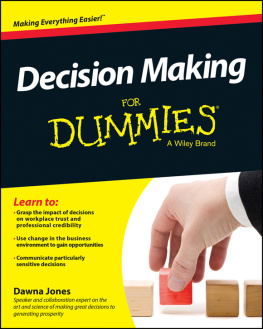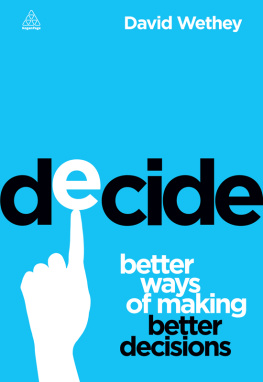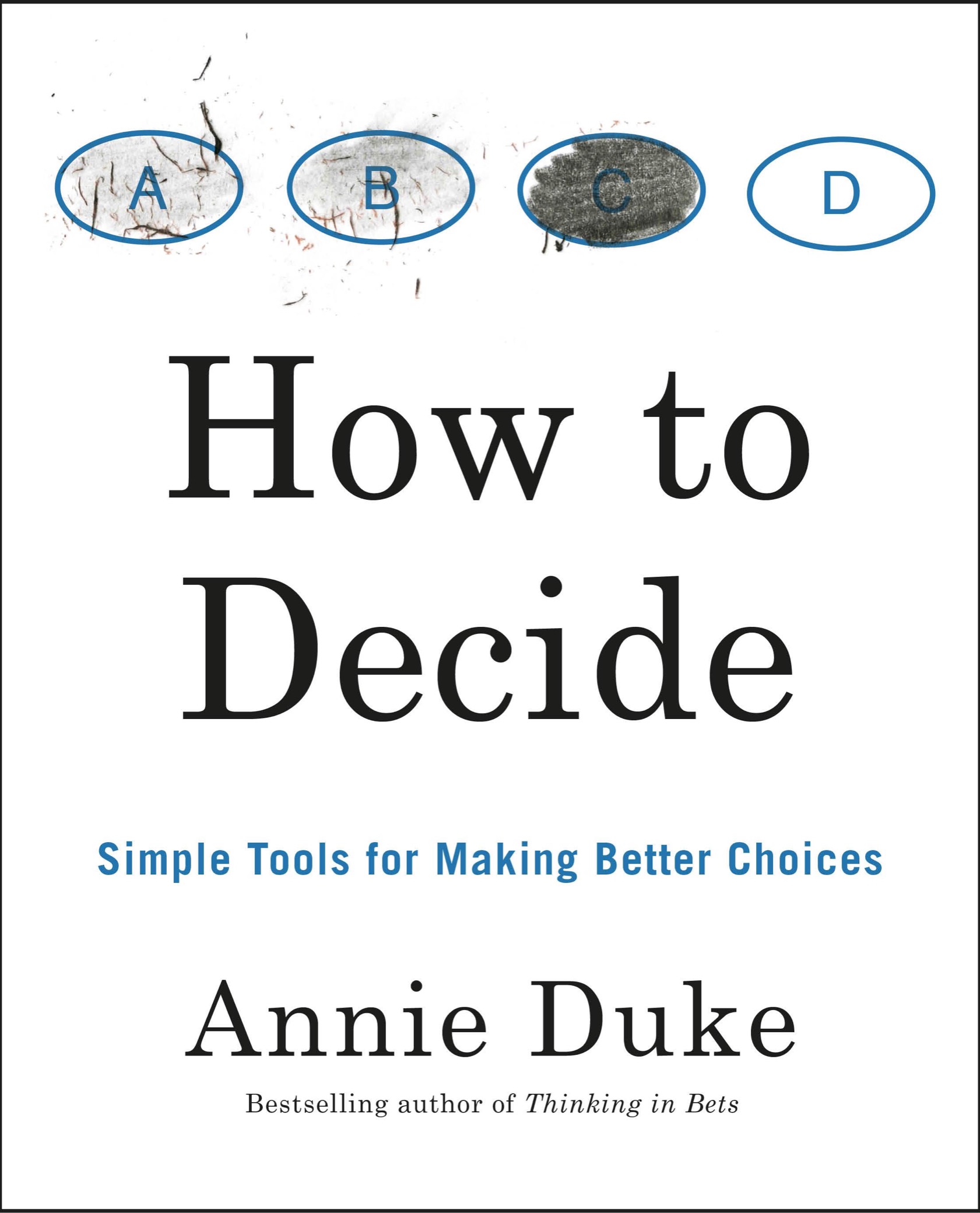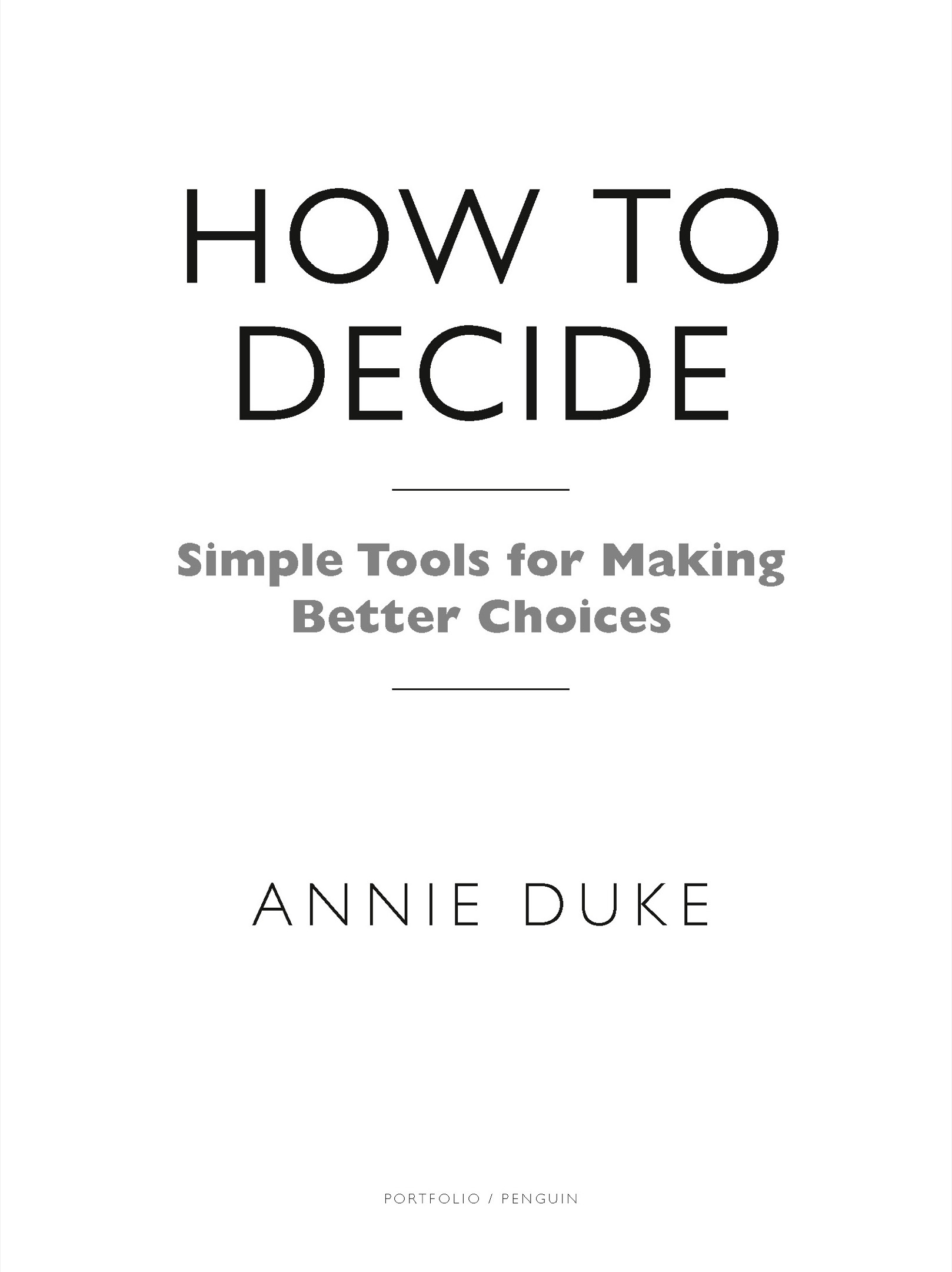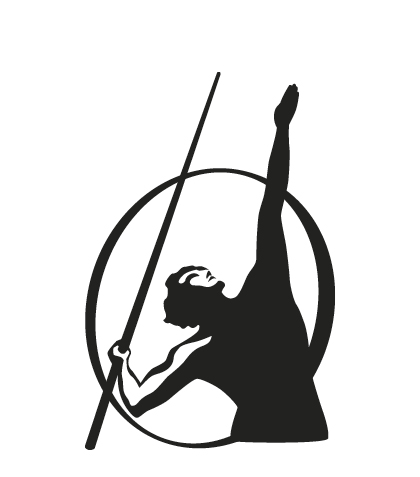
PORTFOLIO / PENGUIN
An imprint of Penguin Random House LLC
penguinrandomhouse.com

Copyright 2020 by Annie Duke
Penguin supports copyright. Copyright fuels creativity, encourages diverse voices, promotes free speech, and creates a vibrant culture. Thank you for buying an authorized edition of this book and for complying with copyright laws by not reproducing, scanning, or distributing any part of it in any form without permission. You are supporting writers and allowing Penguin to continue to publish books for every reader.
Image on : still from CNN/HLN video Man Taunts Charging Bison, https://www.cnn.com/videos/us/2018/08/03/man-taunts-bison-yellowstone-national-park-hln-vpx.hln.
Library of Congress Cataloging-in-Publication Data
Names: Duke, Annie, 1965 author.
Title: How to decide : simple tools for making better choices / Annie Duke.
Description: New York : Portfolio, 2020. | Includes bibliographical references. |
Identifiers: LCCN 2020015471 (print) | LCCN 2020015472 (ebook) | ISBN 9780593084601 (paperback) | ISBN 9780593084618 (ebook)
Subjects: LCSH: Decision making.
Classification: LCC HD30.23 .D85 2020 (print) | LCC HD30.23 (ebook) | DDC 153.8/3dc23
LC record available at https://lccn.loc.gov/2020015471
LC ebook record available at https://lccn.loc.gov/2020015472
pid_prh_5.6.0_c0_r1
To my father, Richard Lederer, who inspires me every day with his passion for teaching and his love of the written word
Contents
Your Best Decision, and Your Worst
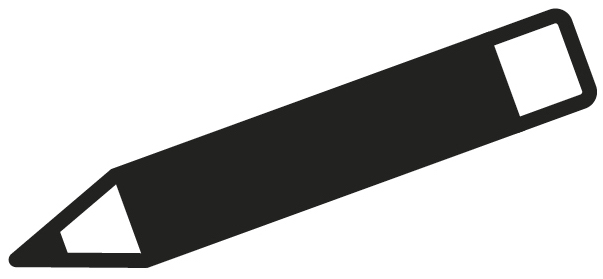
W hat was your best decision of the last year? Go with your gut, the first thing that comes to mind. Describe the decision below.
Now, what was your worst decision of the last year? Again, go with the first thing that comes to mind. Describe the decision below.
Did your best decision end up turning out well? (Circle one.) | YES | NO |
Did your worst decision end up turning out poorly? (Circle one.) | YES | NO |

I f youre like most people, you answered yes to both of those questionsand your description of the decision was probably more a description of the outcome of the decision rather than the decision process itself.
Ive done this exercise with hundreds of people and it always turns out like this. When I ask for their best decision, they tell me their best outcome. When I ask for their worst decision, they tell me their worst outcome.
Well come back to this exercise in a bit.
Introduction
You make thousands of decisions every daysome big, some small. Some clearly of great consequence, like what job to take. And some clearly of little consequence, like what to eat for breakfast.
No matter what type of decision youre facing, its imperative to develop a decision process that not only improves your decision quality, but also helps sort your decisions so you can identify which ones are bigger and which ones are smaller.
Why is it so important to have a high-quality decision process?
Because there are only two things that determine how your life turns out: luck and the quality of your decisions. You have control over only one of those two things.
Luck, by definition, is out of your control. Where and when you were born, whether your boss comes into work in a bad mood, which admissions officer happens to see your college applicationthese are all things that are out of your hands.
The only thing you have control over that can influence the way your life turns out is the quality of your decisions.
What you do have some control over, what you can improve, is the quality of your decisions. And when you make better-quality decisions, you increase the chances that good things will happen to you.
I believe this is a pretty noncontroversial thing to say: Its important to improve your decision process, because its the one thing you have control over in determining the quality of your life.
Even though the importance of making quality decisions seems obvious, its surprising how few people can actually articulate what a good decision process looks like.
This is something that Ive been thinking about all my adult life. First, as a PhD student in cognitive science. Then, as a professional poker player, where I had to constantly make rapid, high-stakes decisions with real money on the line, in an environment where luck has an obvious and significant influence on your short-term results. And for the past eighteen years, as a business consultant on decision strategy, helping executives, teams, and employees make better decisions. (Not to mention as a parent, trying to raise four healthy and happy children.)
What Ive experienced in all these different contexts is that people are generally quite poor at explaining how one might go about making a high-quality decision.
This difficulty isnt just confined to novice poker players or college students or entry-level employees. Even when I ask C-level executiveswho are literally full-time decision-makerswhat a high-quality decision process looks like, the answers I get are all over the map: Ultimately, I trust my gut; Ideally, I follow the consensus of a committee; I weigh the alternatives by making a pros and cons list.
This is actually not that surprising. Outside of vague directives about encouraging critical-thinking skills, decision-making is not explicitly taught in K12 education. If you want to learn about making great decisions, youre unlikely to run into a class on the subject until college or beyond, and even then only as an elective.
No wonder we dont have a common approach. We dont even have a common language for talking about decision-making.
The consequences of being unable to articulate what makes a decision good can be disastrous. After all, your decision-making is the single most important thing you have control over that will help you achieve your goals.
That is why I wrote this book.
How to Decide is going to offer you a framework for thinking about how to improve your decisions as well as a set of tools for executing on that framework.
So what makes for a good decision tool?
A tool is a device or implement used to carry out a particular function. A hammer is a tool used for driving nails. A screwdriver is a tool used for turning screws. There is an elegant simplicity to performing tasks if you have the right tool for the right job.
A good tool has a use that can be reliably repeated. In other words, if you use the same tool in the same way, you would expect to get the same results.
The proper way to use a tool can be taught to another person such that they could reliably use the same tool for the same purpose.

